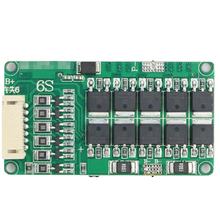Automotive PCB Assembly Applications for Heavy Duty Applications
Name: Automotive PCB Assembly Applications for Heavy Duty Applications
Origin: China
Certified: UL, CE, RoHS
Base Material: FR-4
Board Thickness: customized
Surface Finishing: HASL Lead Free
What does the Automotive PCB Assembly mean?
- Integrating electronic components into a printed circuit board during automotive PCB assembly applications is a specialized manufacturing procedure that ensures the appropriate operation of electronic systems in automobiles. Creating and integrating electronic components onto a PCB, especially for automotive applications, is called an Automotive PCB (Printed Circuit Board) Assembly. PCBs are thin boards containing copper traces and pads on the surface that serve as the electrical connections between components.
- They are often composed of non-conductive materials such as fiberglass or composite epoxy. PCB assemblies are essential for many electronic systems in automobiles in the automotive sector. These include advanced driving assistance systems (ADAS), infotainment systems, temperature control systems, engine control units (ECUs), and powertrain control modules.
Automotive PCB Assembly providing a foundation for mounting?
By providing a foundation for mounting and connecting electronic components, automotive PCB assemblies help these systems work and communicate. Integrating electronic components into a printed circuit board during automotive PCB assembly applications is a specialized manufacturing procedure that ensures the appropriate operation of electronic systems in automobiles.
The Increasing Use of Automotive PCB Assembly Applications:
The automobile sector has significantly increased its usage of printed circuit board (PCB) assembly applications. PCBs are essential to contemporary cars, contributing significantly to many systems and functions.
-
Engine Control Units (ECUs):
ECUs control the engine’s performance, fuel economy, emissions, and other crucial operations. Microcontrollers, sensors, memory chips, and other electronic parts that allow for accurate engine control and monitoring are housed on PCB assemblies of ECUs.
-
Advanced Driver Assistance Systems (ADAS):
Automotive PCB Assembly Applications are crucial to ADAS technologies. To enable real-time data processing and decision-making, these systems integrate several sensors, cameras, radar modules, and communication interfaces on PCBs.
-
Infotainment Systems:
Multimedia interfaces, touchscreen displays, GPS navigation, Bluetooth connection, and other entertainment elements are all included in automotive infotainment systems. PCB assemblies make it easier to integrate different parts, such as processors, memory modules, audio/video interfaces, and wireless communication modules, resulting in smooth functioning and intuitive user interfaces.
-
Systems for safety and security in vehicles:
PCB assemblies are essential to these systems. This covers tire pressure monitoring systems (TPMS), airbag control units, anti-lock brake systems (ABS), and vehicle security modules. To increase passenger safety and defend against theft or unauthorized entry, these systems rely on PCBs’ precise sensing, data processing, and actuation capabilities.
-
Lighting Systems:
Automotive lighting systems need PCB assembly applications, including headlights, taillights, interior illumination, and ambient lighting. PCBs are frequently used in LED-based lighting systems to regulate brightness, color, and different lighting modes, providing energy-efficient and programmable lighting alternatives.
Unlocking the Future Potential of Automotive PCB Assembly Applications:
- Automotive PCB applications offer a great deal of promise for enabling a variety of developments and improving the performance of cars. Vehicle electrification and hybridization depend heavily on PCB assembly. Power electronics, battery management systems, motor control components, and charging infrastructure use PCBs. Power distribution, energy management, and vehicle range may all be enhanced with improvements in automotive PCB assembly.
- Automotive PCB assembly applications are crucial for providing dependable communication between various car systems, external networks, and the Internet of Things (IoT) with the development of connected automobiles. The connection between vehicles (V2V), infrastructure (V2I), and everything (V2X) may be enhanced thanks to developments in this sector, which will boost safety, traffic management, and the driving experience as a whole.






